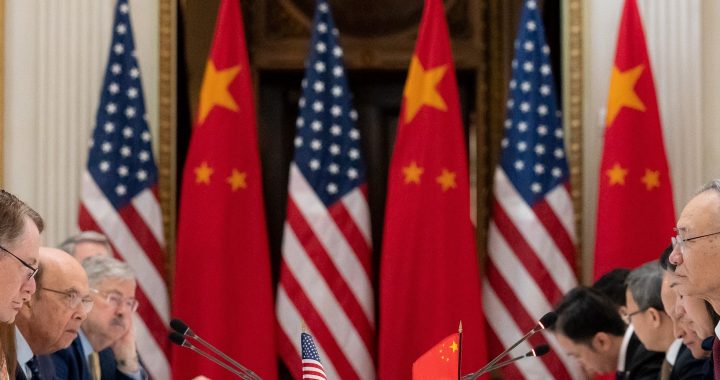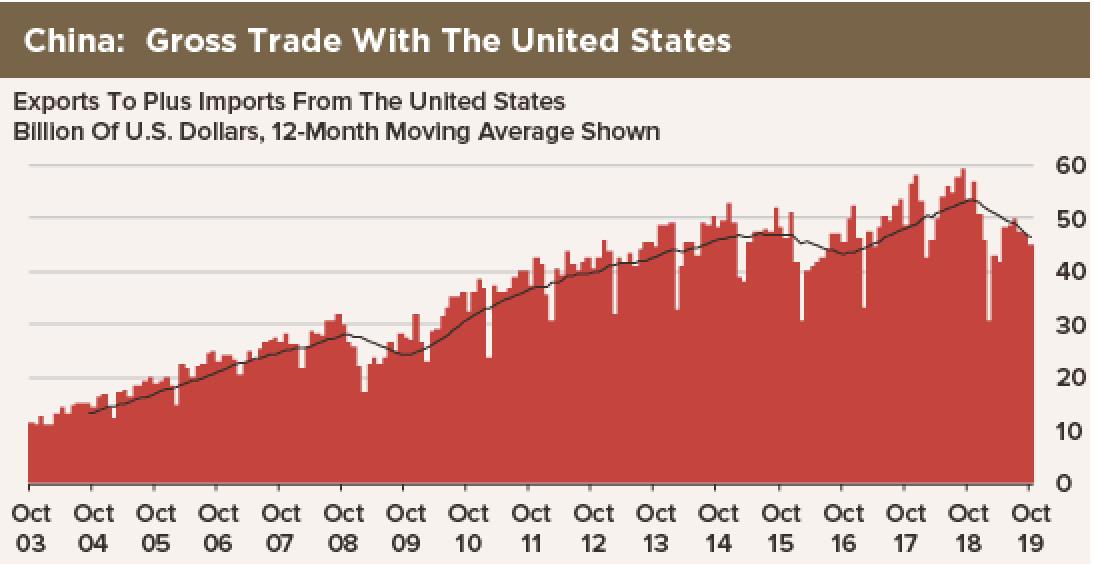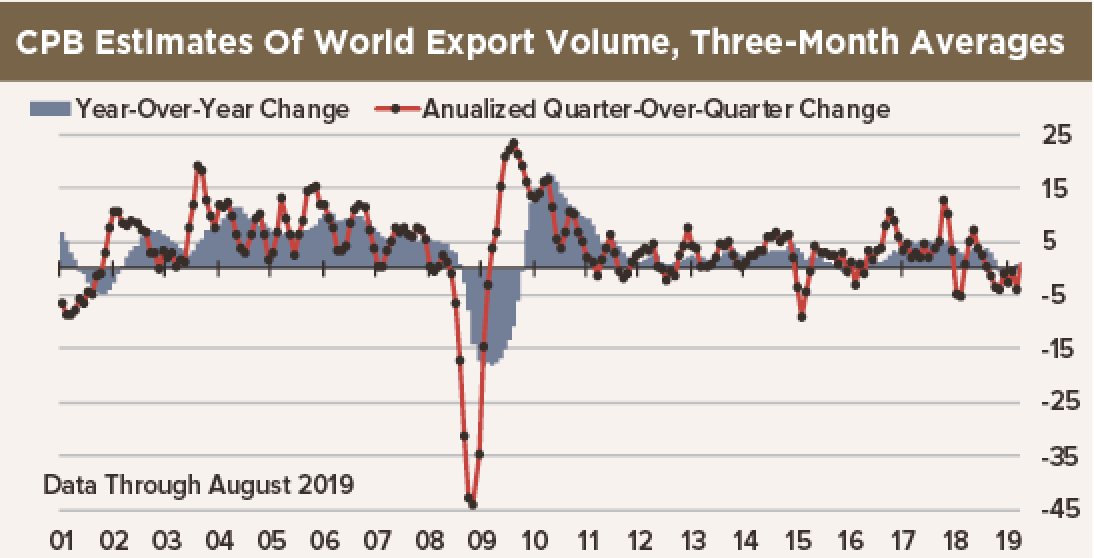Despite the constant buzz in the media, there is nothing of substance to report about the efforts by the United States and China to reach a “Phase One” trade deal. Our base case is that China is prepared to wait until after U.S. presidential elections to compromise on its red-line issues. So we have no deal in our outlook for the next year at least.
But even if a deal were to happen, would it really be enough to reverse the current bout of global economic malaise? The numbers do not add up to support that view, as far as we can tell.
World exports in the three months ended August were $168.1 billion lower than in the same period a year ago. Exports of the United States and China to each other can be gauged by “gross trade”— the sum of China’s exports to and imports from the United States. China’s imports from the United States should equal U.S. exports to China, right? This metric was only $22.9 billion lower in the three months ended August than in the same three months of 2018. We do not see how a $22.9 billion decline in bilateral trade between two quarreling nations translates into a $168.1 billion drop in world exports. We infer that something is more seriously wrong with the global economy than the U.S.-China trade war.
Also, not all the trade affected by this tariff battle reduces world trade: Some imports are diverted—soybeans are an example—so losses by U.S. exporters become new imports for other producers.
We do not believe the global headwinds to prosperity will be eliminated by a rollback of tariffs between the United States and China. If a “deal” pulls back tariffs on, say, half the affected commodities, then a $10 billion fillip to global exports should be about all we can expect to see. That will make a dent in the decline of world trade, but only a little one.
On the observation that declines in world trade have been associated with declines in global GDP—and a stall of exports has generally been accompanied by a stall of GDP—we think that even the greatest “deal” ever will not do much to improve economic prospects for Europe, Britain or Japan, or most of the world’s other major economies.



